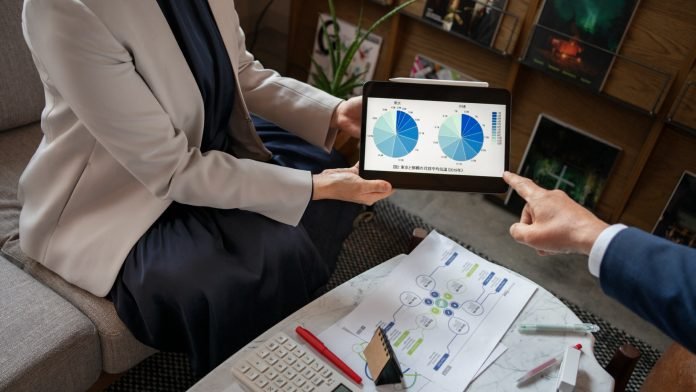1. People Analytics Is a Great Way for Hr Professionals to Improve Processes, Work Culture, and Hiring Strategy
2. When “Good Enough” People Analytics Isn’t
3. Three Capabilities of People Analytics
3.1 Comprehensive Data Collection
3.2 Advanced Analytics and Reporting
3.3 Actionable Insights
Final thoughts!
For many in HR, people analytics can seem overwhelming. It is generally perceived as being puzzling, hard to understand, or hard to apply satisfactorily. People often have a difficult time determining where they should start and which indicators are most important. While personalized benefits or newly offered learning opportunities elicit an immediate thank-you in response, data does not have this capacity. The future direction of human resources heavily relies on data implementation. However, it is essential to understand the difference between people analytics and HR analytics—while people analytics focuses on individual employee behaviors and outcomes, HR analytics is broader, encompassing workforce trends, policies, and business outcomes. The correct application of people analytics leads to better decision-making while also optimizing organizational tasks, which makes you more valuable to the organization.
The execution of people analytics does not require intimidating techniques instead, it can be conducted with a personal touch. Depending on organizational needs, there are different types of people analytics, such as descriptive analytics (what happened), diagnostic analytics (why it happened), predictive analytics (what will happen), and prescriptive analytics (how to make it happen). Furthermore, human capital analytics plays a crucial role in evaluating workforce productivity and its impact on business outcomes. People analytics through intelligent systems exceeds simple reactions from data to deliver substantial advantages to organizational culture, along with employee retention rates and engagement numbers, as well as job performance levels, together with DEIB implementation and employee satisfaction metrics. These benefits can bring smiles to both the C-suite and the broader workforce.
In this article, we will discuss why the data you currently have may not be enough, the main challenges organizations encounter when gathering the appropriate data, the promising effects of people analytics, and the crucial features your analytics solution should include.
1. People Analytics Is a Great Way for Hr Professionals to Improve Processes, Work Culture, and Hiring Strategy
People analytics positions HR as a function that is strategic and data-based, as opposed to a transactional one. With a people analytics approach, HR staff can gain a better understanding of different aspects of the workforce so that processes, organizational culture, and recruiting practices can be enhanced. Beyond optimizing daily HR functions, shaping organizational strategy through HR interventions becomes achievable.
By leveraging people analytics, HR leaders can align workforce planning with business objectives, improve leadership development programs, and enhance performance management systems to drive long-term growth.
Here are some key ways in which people’s analytics can be beneficial:
- Improved Processes: Companies can uncover problems and areas that require improvement in the best practices for HR operations.
- Enhanced Work Culture: By identifying the key drivers of engagement and job satisfaction, HR can cultivate a positive organizational culture.
- Strategic Hiring: Statistical analysis can be utilized to determine the characteristics of excellent workers and their pre-hire profile to assist in attracting similar talent.
2. When “Good Enough” People Analytics Isn’t
The idea that “good enough” people analytics can suffice is often misleading and potentially harmful. Consider, for instance, a scenario where your company enjoys a low turnover rate. To maintain this, understanding the contributing factors is crucial: Is it the workplace culture, promotion process, benefits, compensation, internal growth opportunities, or strong management? Without a thorough grasp of these elements, you might not know which practices to continue or adjust.
Conversely, you might face high turnover in specific departments despite high performance review completion rates. Without deeper data analysis, the root causes remain hidden. This is particularly relevant in improving recruitment and talent acquisition, where people analytics can help identify the characteristics of top performers, refine hiring criteria, and predict candidate success, ensuring better long-term workforce planning. Detailed analytics might show these teams have fewer manager-employee interactions compared to high-performing groups. Or, it could uncover a stressful work environment caused by ineffective management, with employees managing to perform despite poor leadership at the expense of their well-being. This combination of investigations shows that recently appointed managers lead the departments and indicates the organization needs stronger leadership development for new managers.
Detailed proper data accessible with strong analytical abilities creates opportunities for understanding essential information. The acquired organizational insights make it possible for you to create decisions that optimize workforce outcomes while boosting their achievement rates.
3. Three Capabilities of People Analytics
To harness the full potential of people analytics, your analytics tool should have the following three capabilities:
3.1 Comprehensive Data Collection
- The organization will gather information by examining performance evaluations along with employee surveys together with population statistics.
- The system needs to display fresh and exact information that represents the present-day configuration of personnel within the organization.
- Several HR systems should be integrated to show a complete understanding of the organization’s operations.
3.2 Advanced Analytics and Reporting
- Analysis of predictive analytics enables organizations to forecast upcoming trends and results starting from employee turnover numbers and performance metrics.
- The organization should employ machine learning algorithms to find hidden patterns for deeper insights.
- The system creates comprehensive reports containing visualizations that explain intricate data for swift, actionable decisions.
3.3 Actionable Insights
- The recommendations derive from data analysis to support HR decision-making procedures.
- Structure scenario planning as a tool to judge the prospective outcomes from various strategic approaches.
- Real-time data must become available for organizations to make quick, responsive decisions.
Final thoughts!
In other words, people analytics is not a mere fad but is indeed an essential function in today’s world of human resources. This method of extensive data collection and analysis, followed by action, means that human resource professionals can effectively influence change within organizations. Data cannot replace human interaction in HR work, yet it serves as a major resource for decisions that prioritize workers and organizational business goals. Through becoming an essential contributor to organizational outcomes, you will authenticate the strategic position of HR within the organization.
Explore HRTech News for the latest Tech Trends in Human Resources Technology.












